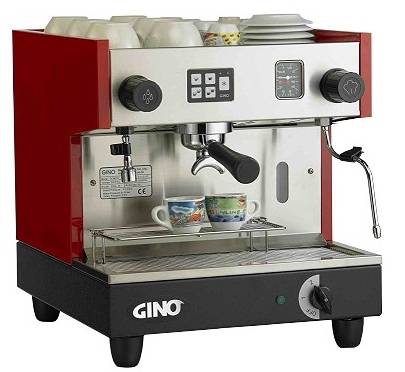Scientific interpretation of Coffee extraction terms-Coffee must see knowledge
Coffee extraction is very knowledgeable, especially in the production of espresso. Here are some terms that professionals often use when talking about coffee extraction. Let's learn the following.
Blonding: describes the conversion of the liquid from dark brown with tiger stripes to uniform light yellow. This usually occurs in the last 1amp 3 stage, indicating that the extraction operation can be ended. The over-yellowing part of espresso has a light taste and almost no aroma. If it lasts too long, it will dilute the mellowness and is no longer a pleasant taste.
Channel effect (channeling): water flows rapidly through cracks in coffee cakes, resulting in thin, underextracted espresso. When this happens, a yellowing stripe is often seen in the coffee stream; sometimes the channel effect leaves a pencil lead-sized hole in the coffee cake.
Coffee oil (Crema): make sure that espresso makes the right signal (on coffee machines where coffee oil is not forced to produce) and that various gases-air and carbon dioxide-are distributed in water under high pressure. The liquid also includes emulsified oil. A deep golden brown foam is formed on the surface of espresso.
Gold (extraction) rate (Golden rule): a common term describing the ideal time and capacity for extracting espresso. The Italian National Coffee Institute (Instituto Nationale Espresso Italiano) provides a practical definition of the ideal espresso properties, although these parameters are more like the "golden rule" than mandatory rules. The simple definition is: use about 16-18 grams of coffee to produce 60 milliliters of double espresso in 22 to 27 seconds (from the time the coffee liquid flows out).
Over-extraction: too much coffee solids are extracted to produce a strong, irritating aroma. Visually, the capacity of coffee is insufficient, and coffee oil is a thin layer of blackening. The dark black circle on the edge of the cup is another typical indication of over-extraction or excessive extraction of water temperature.
Pre-infusion: the act of infiltrating coffee powder in an espresso machine before it is actually extracted. Some coffee machines are achieved through pumps; the pump works for 1 / 2 seconds and stops for 1 / 2 seconds. Then start again and continue to extract coffee. Fully automatic machines and some automatic machines use this method. The other is called "natural" or progressive prepreg, and this is the kind of machine with E61 outlet head. After the pump starts, the pressure is completely applied before the coffee cake, and the second cavity must be filled. The soaking time of coffee powder was 3-7 seconds before the pressure was established. This kind of prepreg is more popular. There is a car saying that progressive pre-wetting can improve the extraction of coffee.
Tiger spot stripes and variegated spots: the main visual cues for good extraction. The tiger spot is formed by the contrast between dark and light coffee oil in the coffee stream; ideally it appears at the beginning of the coffee and lasts until the end. "mottling" is the performance of good extraction in the cup; refers to the dark brown spots and reddish brown markings formed on the surface of coffee oil.
Insufficient extraction: coffee solids are not extracted enough to produce a light, boring aroma. Visually, it is a fast and large-capacity extraction, and the coffee oil is a uniform light yellow.
Source: calf coffee roasting
Important Notice :
前街咖啡 FrontStreet Coffee has moved to new addredd:
FrontStreet Coffee Address: 315,Donghua East Road,GuangZhou
Tel:020 38364473
- Prev

Cappuccino SCAE International Standard and solution-must-see by baristas
Cappuccino is a coffee drink invented by the Italians. Its structure is Italian concentrate (Espresso) + milk + milk foam. The traditional cappuccino practice is: the Italian concentrated / milk / milk foam ratio is 1:1:1, the coffee flavor is stronger, and the milk foam is rough and dry. SCAE (European boutique coffee association) cappuccino standard: 1. The cup capacity is 150-180ml in
- Next

Introduction of common Italian coffee maker
At present, we are talking about the following main types of coffee machines: automatic coffee machine, semi-automatic coffee machine and capsule coffee machine. These three machines are called machines. French presses and siphon pots are not machines. Instant coffee is not coffee in the coffee circle. It is omitted today. The coffee we drink is made by these devices. The fully automatic coffee machine is mainly put directly into the coffee beans, and the machine grinds and flushes by itself.
Related
- What is the meaning of lactic acid fermentation with coffee bean treatment?
- How to judge the state of foam by sound?
- How does the latte pull out the unicorn pattern? Come to get for a little trick to improve the flower pull!
- Will flower pulling affect the taste of the latte?
- Do you know the history of coffee?
- The difference between honey treatment and sun washing what is raisin honey treatment?
- What kind of milk can a novice use to make coffee foam to keep the foam longer? The correct method and skills of milking tutorial sharing
- Why do washed coffee beans taste sour? Flavor characteristics of washed Coffee
- Introduction to the skill of how to practice the size and height of water injection around the circle of hand-brewed coffee
- How do beginners practice coffee flower drawing from scratch?

